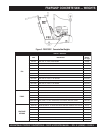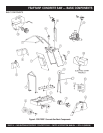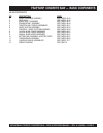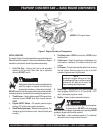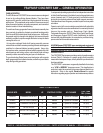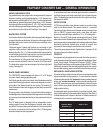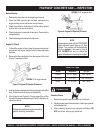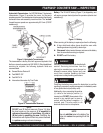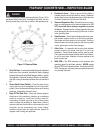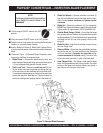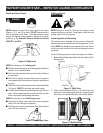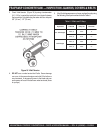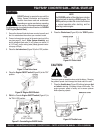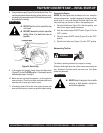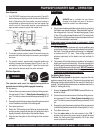
MQ-WHITEMAN FS2/FS2SP CONCRETE SAW — PARTS & OPERATION MANUAL — REV. #2 (06/26/06) — PAGE 21
FS2/FS2SP CONCRETE SAW — INSPECTION
Hydrostatic Transmission - An EATON® Model 7 hydrostatic
transmission (Figure 9) provides the power for the saw's
propulsion system. The transmission drives a sprocket that directly
connects the rear axle assembly via a drive chain. The "
no load
"
forward/reverse speeds are approximately 80 ft/min (FS2SP
models only).
Figure 9. Hydrostatic Transmission
The transmission is factory filled with approved hydraulic fluid
that has a viscosity equivalent to SAE 20W-20. Should additional
servicing be required, the following hydraulic fluids are
recommended:
z
General Motors Dextron B
z
Ford MM2C-33F
z
Ford M2C-41A
z
International harvester Hy-Tran Fluids
Figure 10. Transmission Reservoir
NOTE
DO NOT over fill the fluid reservoir (Figure 10). Note
the level marks on the reservoir.
It is essential to
reference the existing oil conditions (A) cold or
(B)
hot prior to operating the saw.
Overfilling the
transmission with hydraulic fluid may cause the seals
to
rupture
causing mechanical damage.
Battery - The 12-Volt DC battery (Figure 11) is shipped dry, and
will require a proper electrolyte level for operation (electric start
models only).
Figure 11. Battery
When servicing of the battery is required perform the following:
z
A face shield and rubber gloves should be worn while
handling and servicing battery's electrolyte.
z
Disconnect
battery terminal clamps, and remove the battery
from the saw when servicing is required.
z
DO NOT overfill the battery.
WARNING!
Electrolyte is an acid and must be handled with
caution. Servicing instructions from the
electrolyte manufacturer must always be
followed to ensure safety. Serious injury can
result from careless handling and non-
compliance to safety handling instructions.
WARNING!
Overfilling the battery may cause the electrolyte to overflow
resulting in corrosion to nearby components. Immediately wash
off any spilled electrolyte (battery acid).
Additionally, when connecting the positive
(+) cable to the battery's positive (+)
terminal post, DO NOT allow contact of the
wrench or any metallic part to come in
contact with the battery's negative (-)
terminal post. This may result in an
electrical short circuit or an explosion.
NOTE
Use only
distilled
water in the battery. Tap
water can
reduce
the operating life of the
battery.



